Stitching in Time: Richard McVetis’s Textile Art
London-based, contemporary textile artist Richard McVetis makes intricate, minimalist objects that take hours of dedication and patience. His works of art, which range from wall hangings to sculptural cubes, feature tiny, hand-woven grey and black marks built up slowly over time onto woolen fabric grounds, each stitch recording the methodical, repetitive movements of his hand as he embeds marks deep into the weave of the fabric. He argues that his slow actions allow him to grasp time and make it real, leaving it bare and exposed for the world to see, noting, “The process of embroidery, slow, methodical, restores a sense of order and informs a more profound comprehension and connection to the world.”
McVetis was a creative child who enjoyed conjuring up imaginary worlds through drawing. He remembers back, “Drawing has always played a central part to my practice and since I was a child the medium I had most access to, was pen and paper. I would create entire worlds on the back pages of my school exercise book, building and destroying futuristic cities with a ball point pen. The miniature scale of these worlds I created is a key element in the understanding and organizing of space that I have now.” He studied Embroidery at Manchester Metropolitan University, followed by Constructed Textiles at The Royal College of Art in London, from where he graduated in 2008. As a student, drawing was a core component of his way of thinking about mark making, particularly the fine lines and dots made by pen and ink. These in turn came to inform his language of embroidery, which he likens to the practice of drawing, observing, “Fundamentally… embroidery’s appeal has always been about drawing, the similarities between pen on paper and thread on fabric, and the immediacy and directness of the mark making… Drawing as an act is at the core of everything I do.”
Today, McVetis teaches part-time at the Royal College of Art, and spends the rest of his time making art, either at his studio in Cockpit Bloomsbury, or in his home office. Here he takes on large-scale commissions as well as working on smaller, experimental pieces which toy with differing layouts, formats and arrangements of marks. In the series ‘Units in Time’, 2015, McVetis explores how the passage of time can be documented in a series of small embroidered fabric cubes, each one adorned with minuscule woven marks ranging from squares and grids to circles and randomized patterns. The title for each cube came from the number of hours and minutes spent making them, some taking up to 50 hours to complete. Drawing attention to their timeframes in this way pushes us to move in closer and really see just how hand-crafted and intricate each cube really is, and the slow, meditative process that the artist engaged in while carrying out his practice. McVetis notes how his later, similar series of cubes titled ‘Variations of a Stitched Cube’, 2017, took more than 2000 hours to create.
He says the abstract, repetitive language of works like these comes from a variety of sources, including the 1930s photography of Berenice Abbott and the Minimalist grids of artist Agnes Martin, along with the contemporary work of Rachael Whiteread and Vija Celmins. Like these artists, there is an innate quality of calm stillness bound into his artworks, one that seems to capture and suspend time, if even for the briefest of moments.
In the more recent series ‘Light Abstracts’, McVetis has moved into new territory, creating a series of embroideries based on the patterns of light that surround the River Thames in London as seen from above. He weaves each area of light with black thread, thus manifesting the intangible quality of light into material substance, while recreating the river’s familiar curve that we all know by heart. He says, “These physical, tactile, and repetitive modes of creation allow me the time to see and think, to occupy a space and consider the city and world that I inhabit.”





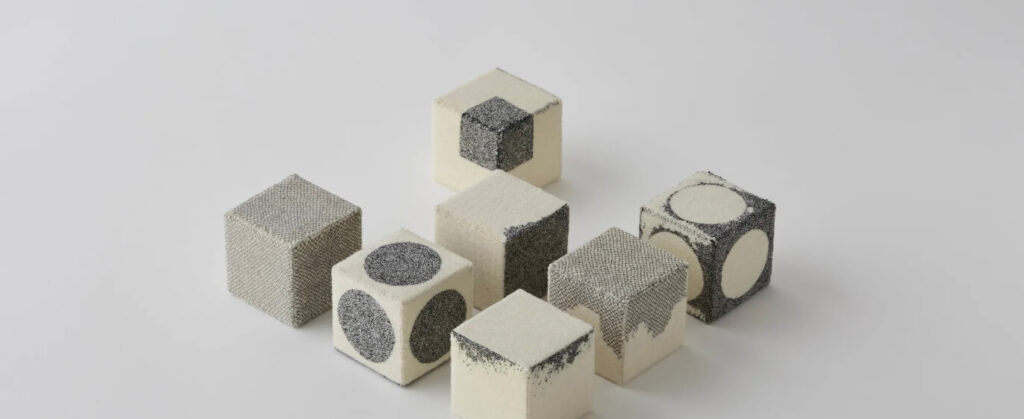
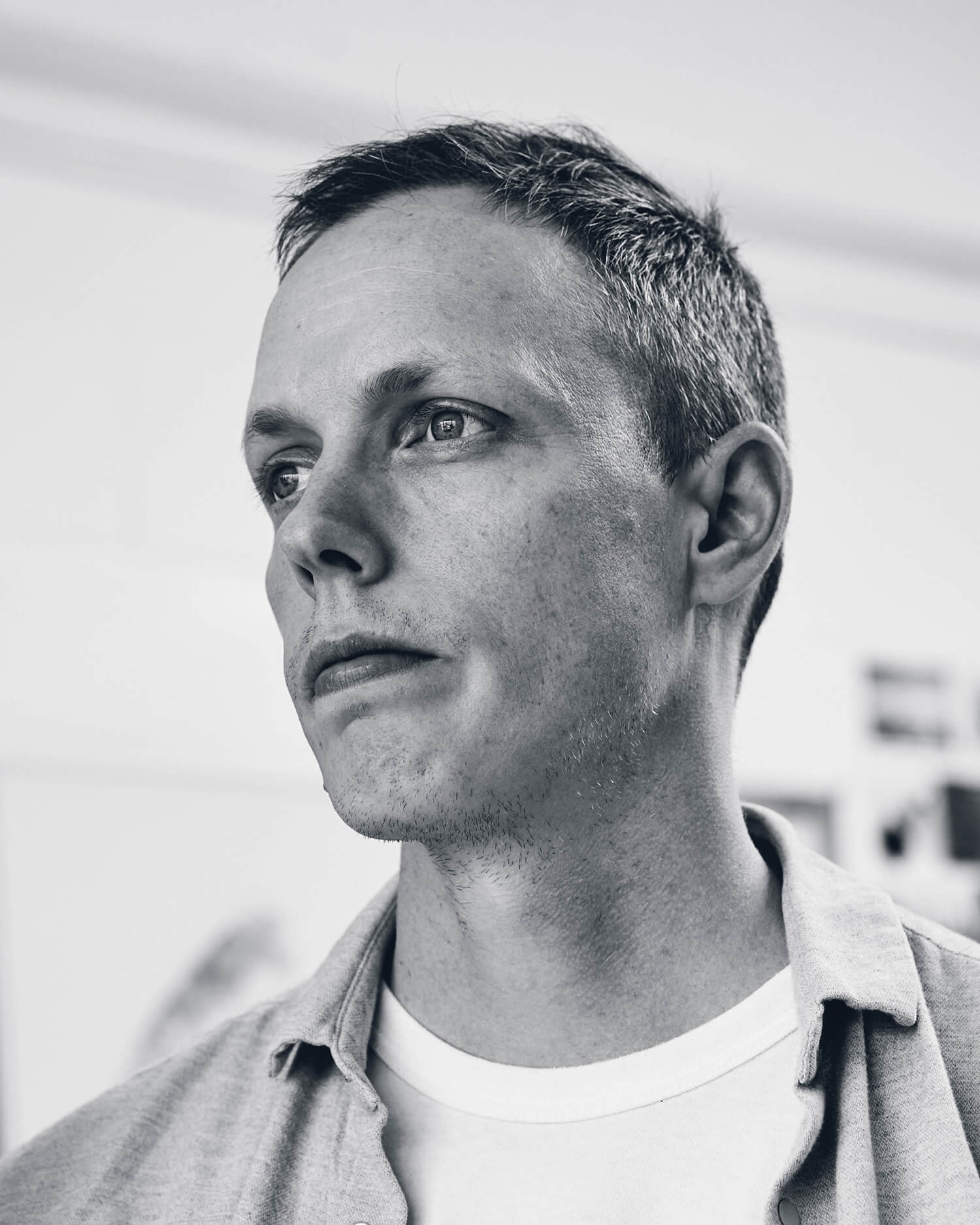
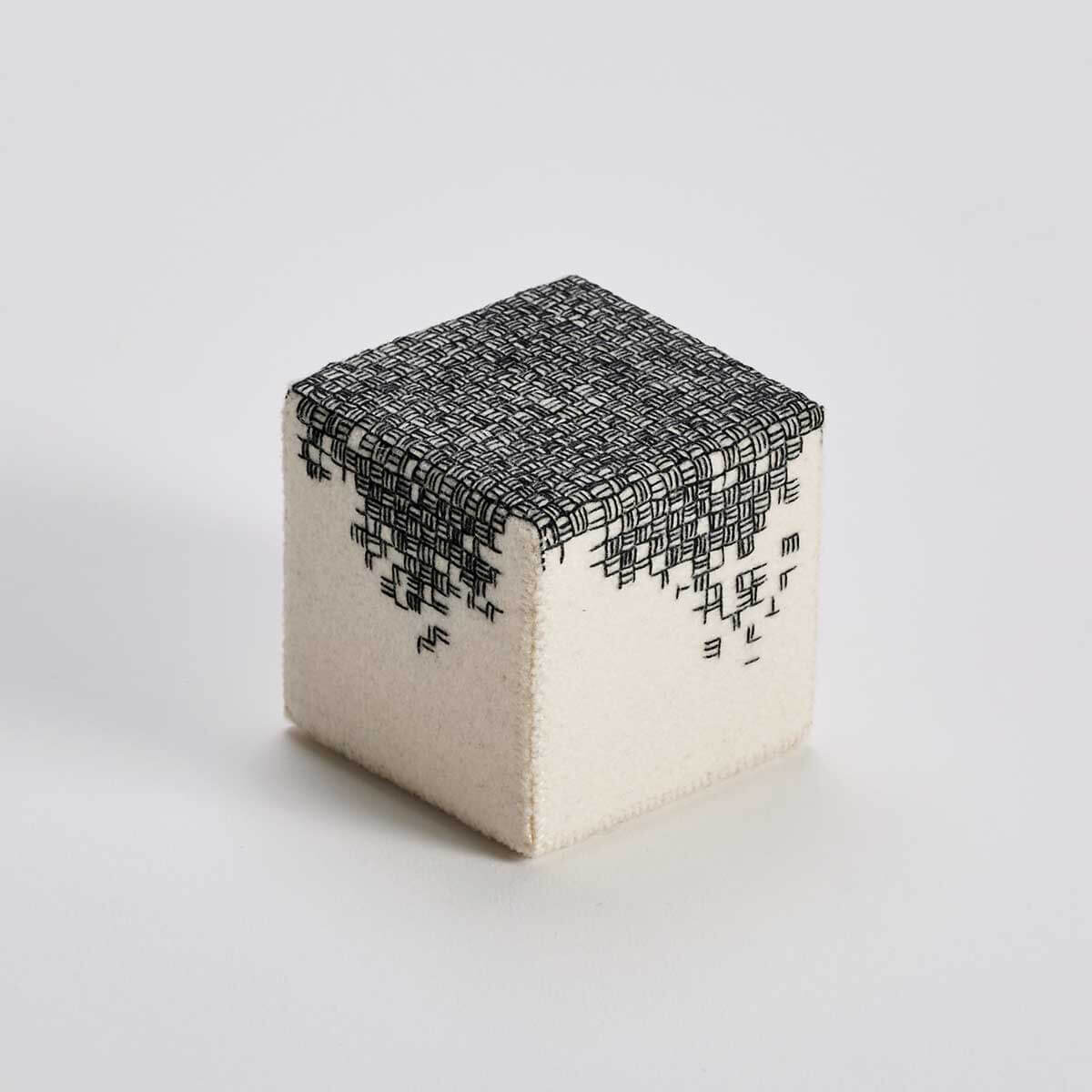
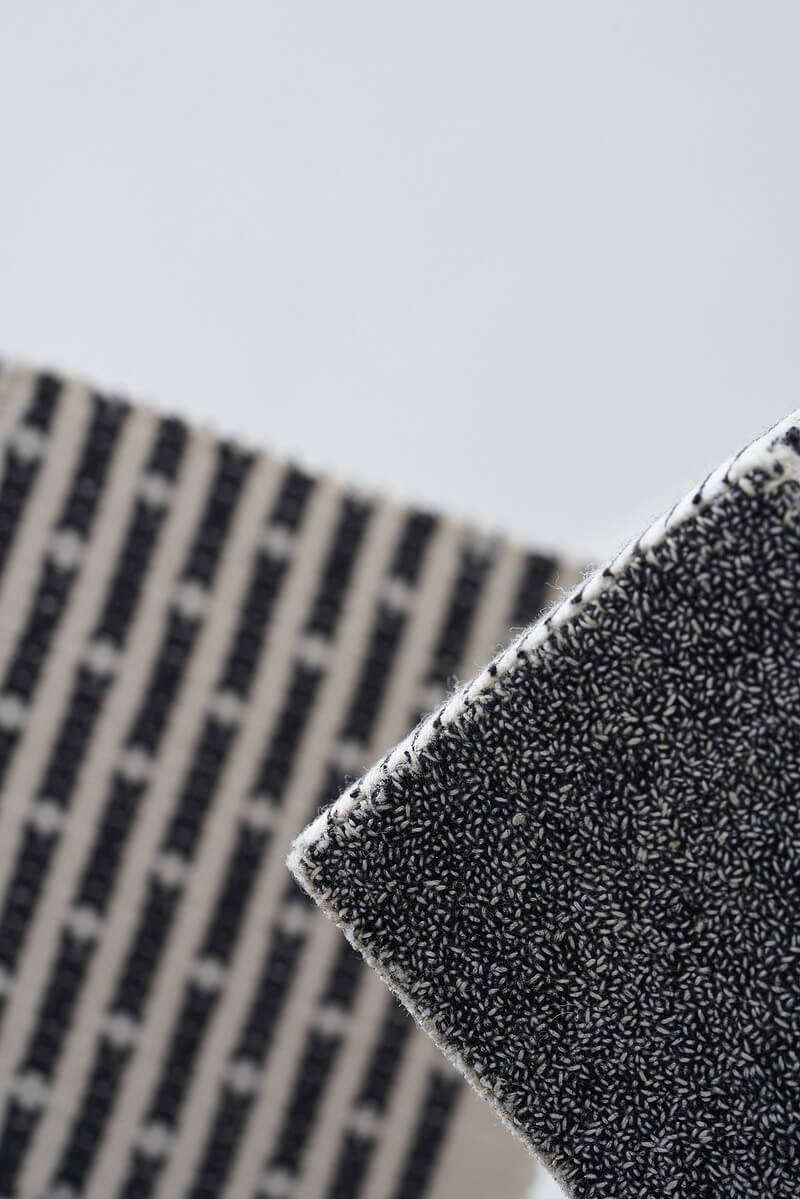
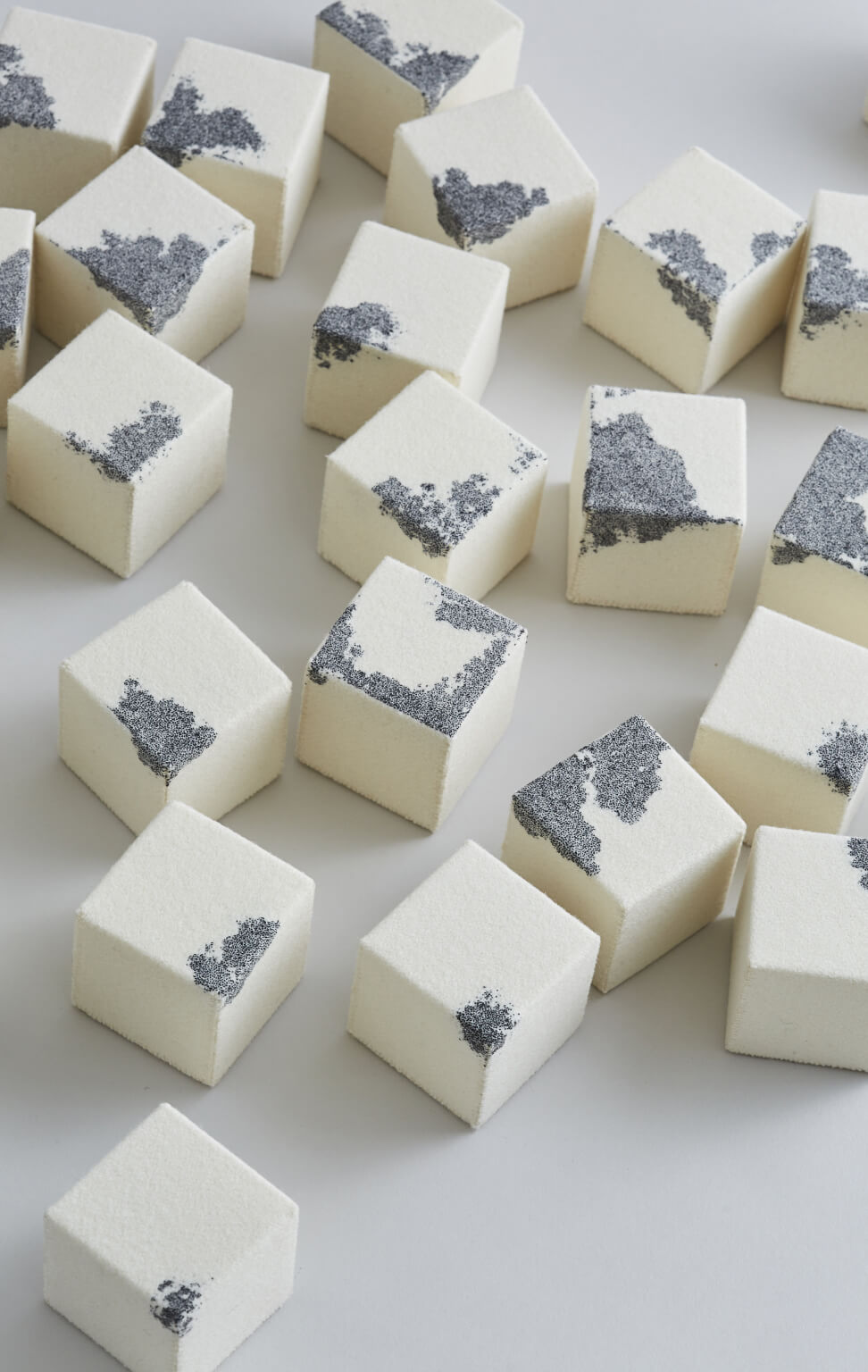
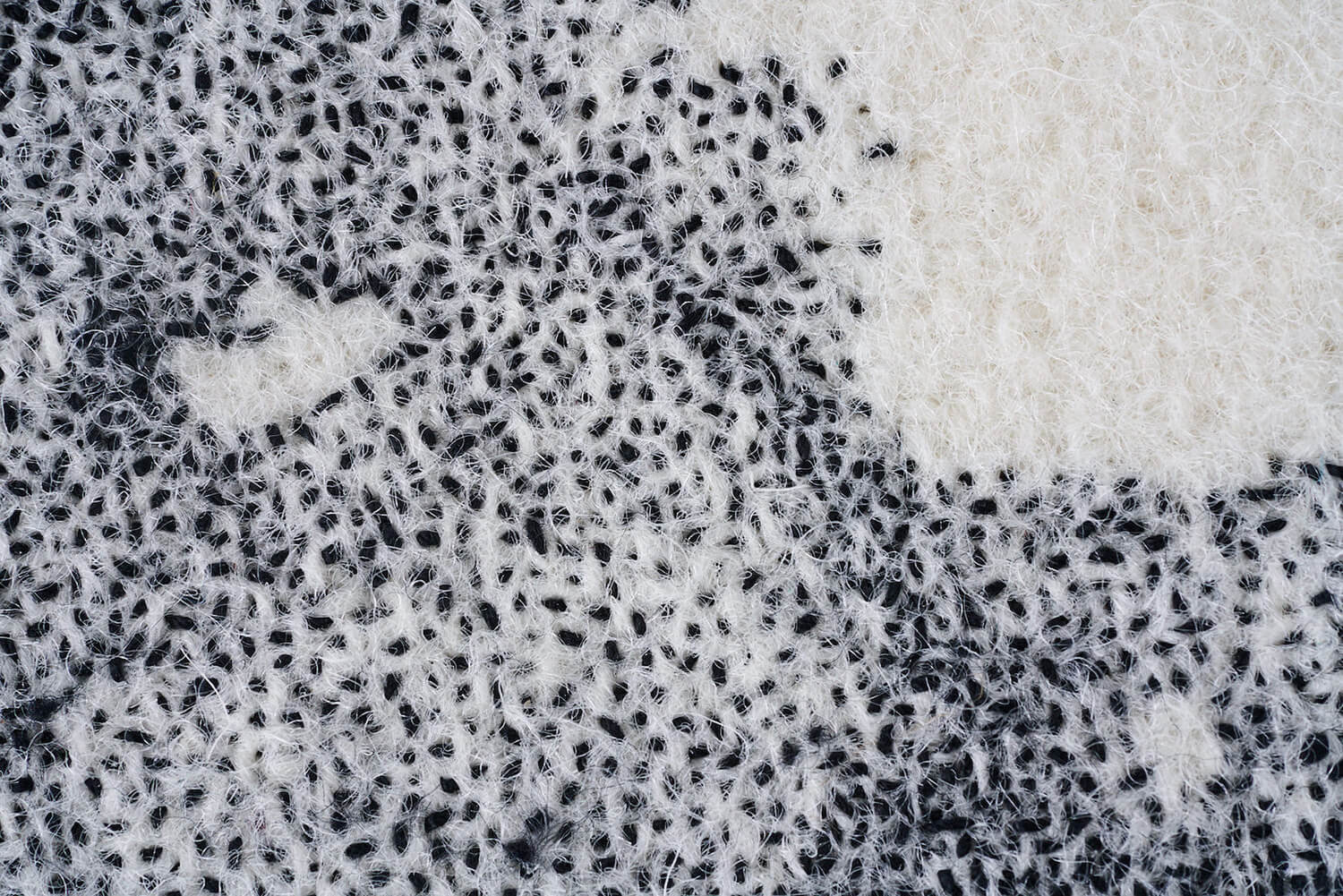
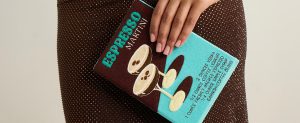



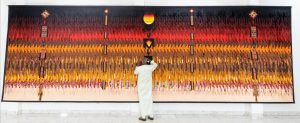
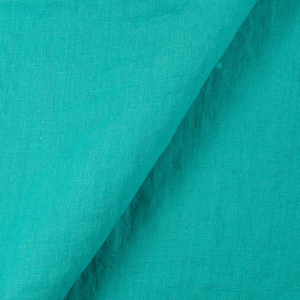


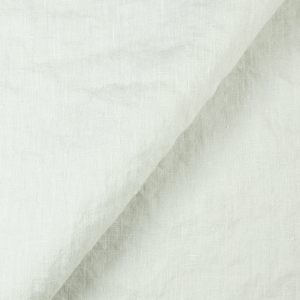

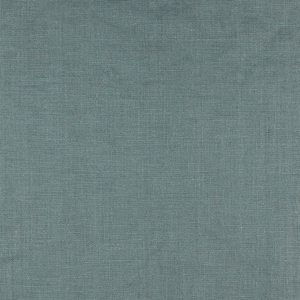






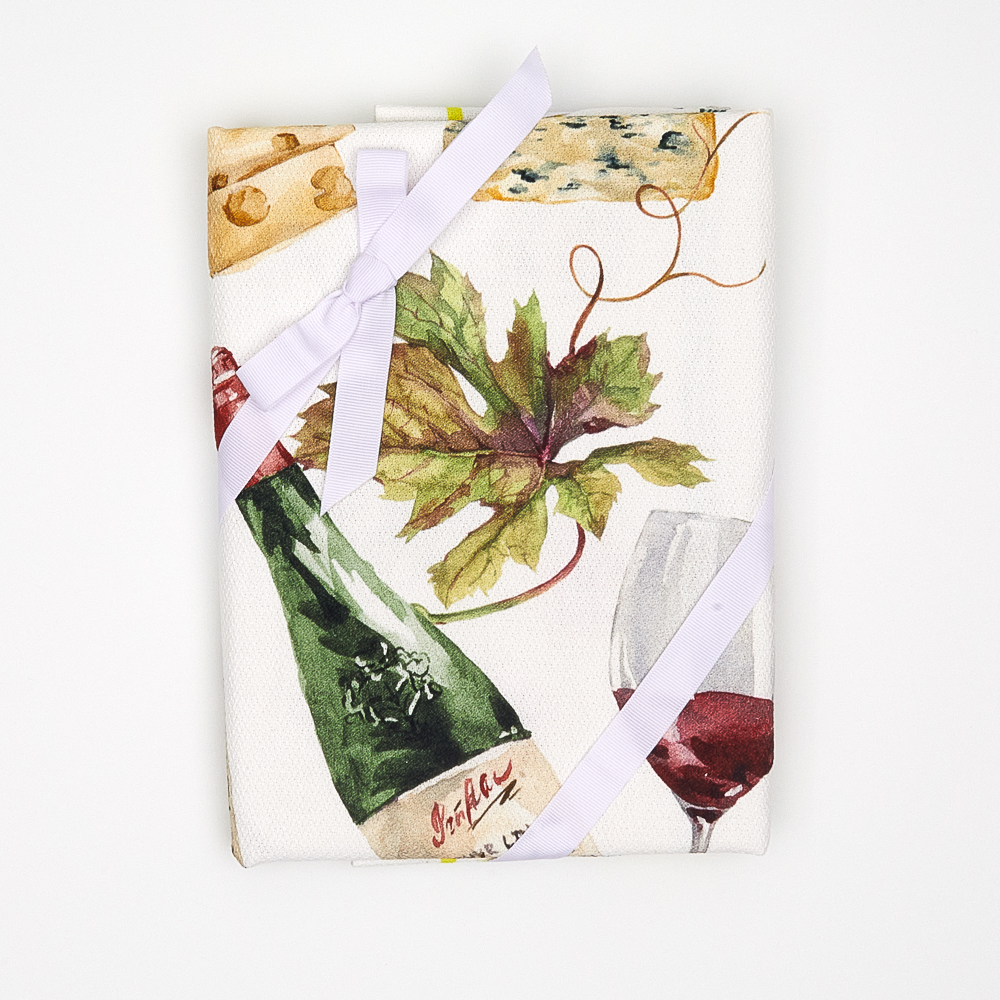






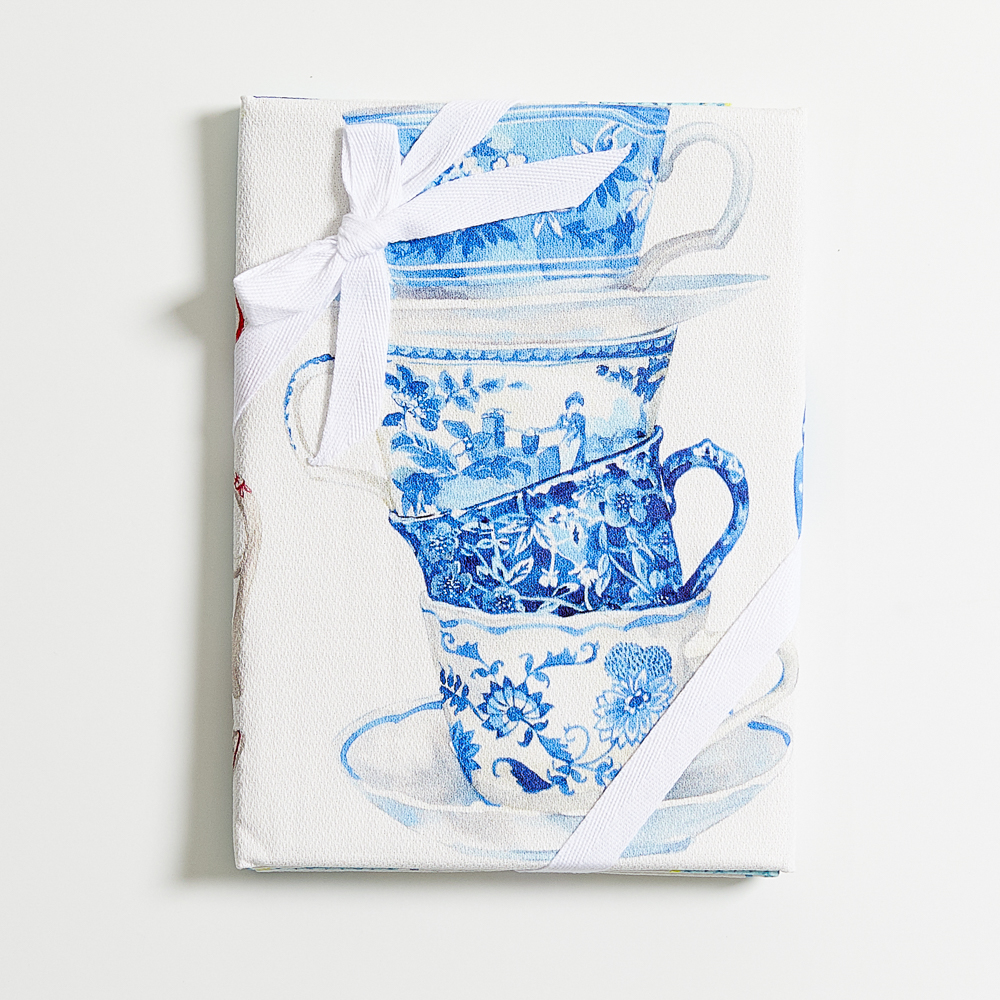






3 Comments
Pam Kavanaugh
These are fascinating. I would like to know the size/scale. Ice-cube sized? tea cup sized? Hassock sized? Does size vary much between the projects? The bases look like wool felt, but the thread seems not to be as fuzzy.
Kathleen Smith
Here is the artist’s website.
https://www.textileartist.org/richard-mcvetis-act-making/
“Each cube measures 6cm x 6cm x 6cm (2¼” x 2¼” x 2¼”). Hand embroidery. Wool, cotton thread. “
Laura Raymond
McVetis’ work is fascinating! Speaking of embroidery as an art form, have you seen work by Michele Carragher?